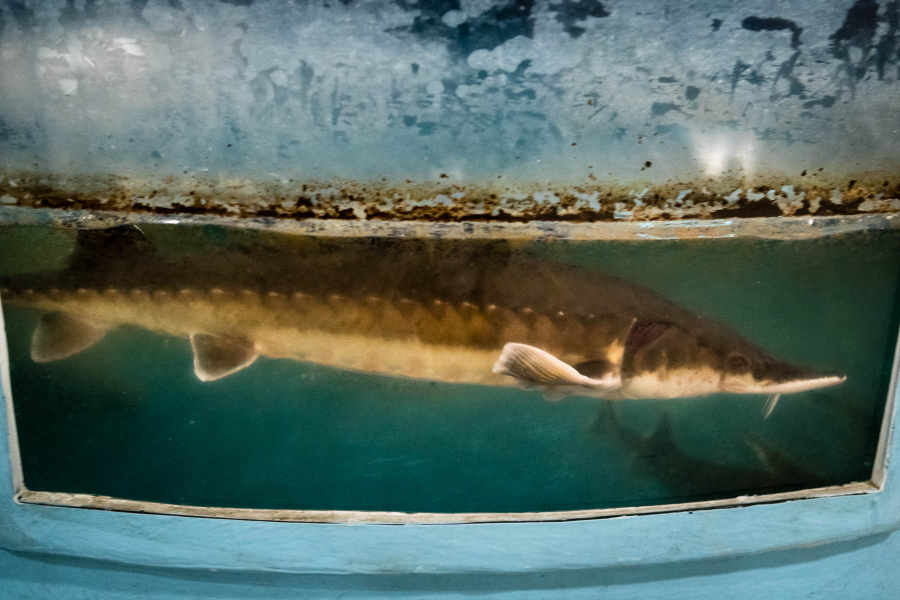Scientists help sturgeon on road to recovery
Once-abundant prehistoric fish now rare sight in Bay waters

An Atlantic sturgeon swims in a tank at the University of Maryland Center for Environmental Science’s Horn Point Laboratory in Cambridge, Maryland, on August 3, 2017. These prehistoric fish have existed for more than 120 million years and were around when dinosaurs roamed the earth. However, historical overfishing and poor water quality led to the Atlantic sturgeon being declared endangered in 2012.
When English settlers arrived in the Chesapeake Bay region in the 1600s, sturgeon were abundant and served as a reliable source of food for most of the year. But demand for sturgeon caviar in the 19th century, combined with increased pollution and a loss of spawning grounds, led to a population collapse. Today, the fish that was once found throughout the Bay and its freshwater rivers is now a rare sight.
There is hope, however. Experts like those at Horn Point Laboratory have been working to study the life history of the prehistoric fish and rebuild the sturgeon population. Through a sturgeon stocking program, hatchery-spawned fish have been released into Bay tributaries and monitored for survival and growth. And in recent years, native Atlantic sturgeon—that is, sturgeon not related to those released in the stocking program—have been found in the James and Pamunkey Rivers. By working to understand what may be helping bring back these native sturgeon, scientists hope to reinforce and support their recovery.
Learn more about the sturgeon restoration effort in the Chesapeake Bay.

Comments
There are no comments.
Thank you!
Your comment has been received. Before it can be published, the comment will be reviewed by our team to ensure it adheres with our rules of engagement.
Back to recent stories